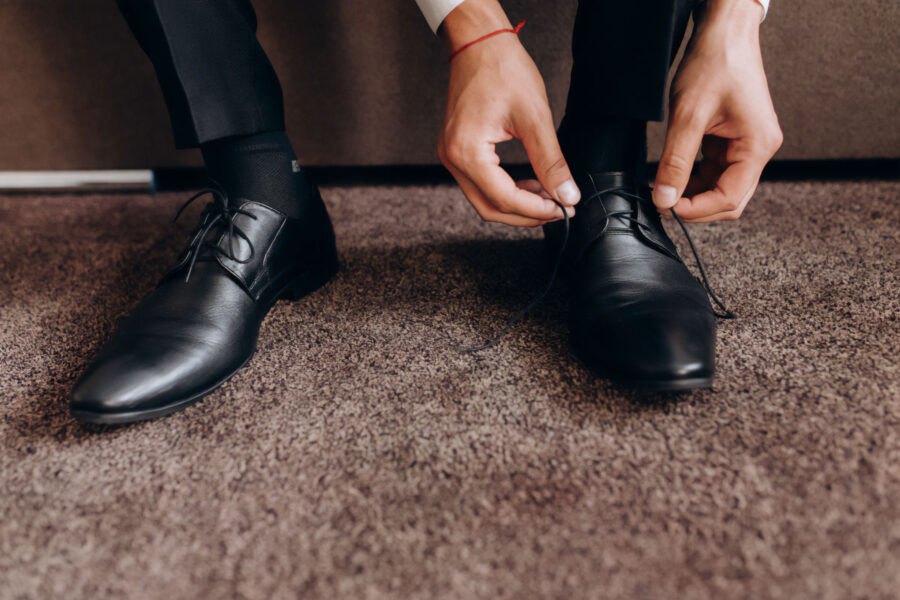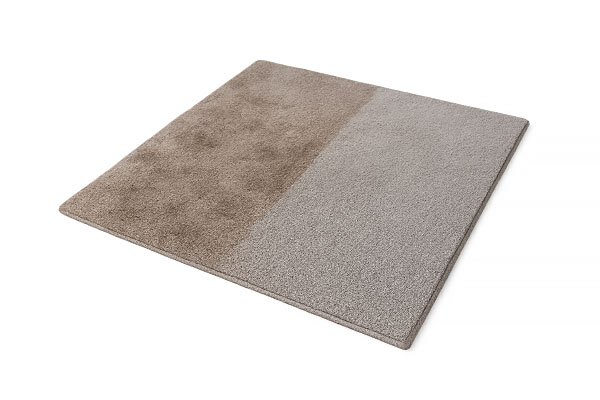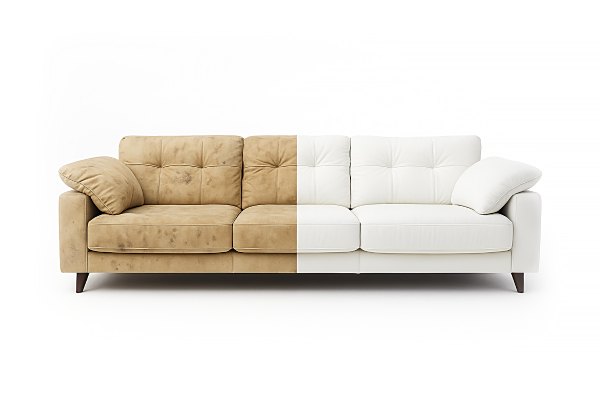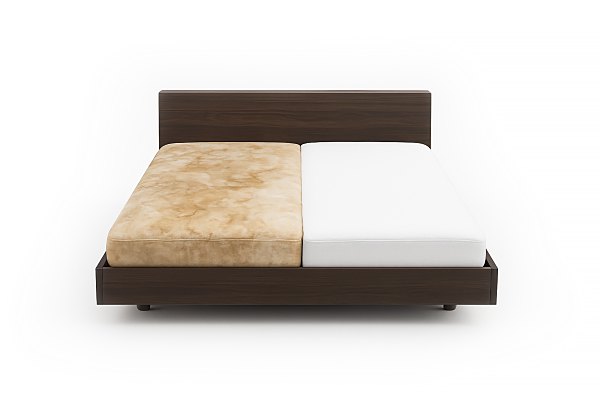Shoe dirt on rugs remains one of the most persistent household cleaning challenges. Daily foot traffic inevitably brings outdoor soil, mud, and debris deep into rug fibres. This accumulation not only affects the visual appeal but also compromises the rug’s longevity and hygiene standards.
Understanding effective removal techniques becomes essential for maintaining clean living spaces. Various methods exist to tackle different types of shoe-related dirt deposits. From immediate spot treatments to comprehensive deep cleaning approaches, each situation requires specific solutions. Professional knowledge combined with proper home techniques ensures optimal results without damaging precious floor coverings.
Understanding common dirt problems caused by footwear
Footwear introduces numerous contaminants into homes through regular use. Different shoe materials and sole patterns trap varying amounts of debris. Wet conditions outside compound these issues significantly.
Types of dirt tracked by different shoe materials
Leather shoes typically collect fine dust particles and surface moisture. These materials create less aggressive dirt patterns compared to textured soles. However, leather can transfer oils and polish residues onto delicate rug surfaces.
Canvas and fabric shoes absorb more moisture and dirt simultaneously. The porous nature of these materials allows deeper penetration of outdoor contaminants. Multiple cleaning cycles become necessary to remove embedded particles completely.
Athletic shoes present unique challenges with their deep tread patterns. These grooves collect substantial amounts of soil, leaves, and organic matter. The rubber compounds can also leave distinctive marks on lighter rug colours.
Boots represent the most problematic footwear category for rug cleanliness. Winter boots carrying salt, snow, and road chemicals create complex staining scenarios. Work boots introduce industrial residues, oils, and heavier soil deposits that require specialised treatment approaches.
Common soil patterns and their characteristics
High-traffic areas develop predictable dirt accumulation patterns near doorways and walkways. These zones require more frequent attention than surrounding areas. Regular maintenance prevents permanent discolouration in these critical spots.
Common dirt accumulation zones:
- Entrance pathways and doormat areas
- Staircase landings and step edges
- Hallway centres and room transitions
- Kitchen access routes and dining areas
- Living room seating approach zones
Weather conditions significantly influence dirt characteristics throughout seasons. Spring brings muddy clay deposits that require gentle extraction techniques. Summer introduces grass stains and pollen that benefit from enzyme treatments.
Autumn leaves create organic staining compounds that penetrate fibres rapidly. Winter conditions produce salt crystallisation and chemical residue patterns. Each seasonal challenge demands adapted cleaning strategies for effective removal.
Impact on different rug materials
Natural fibre rugs respond differently to shoe dirt compared to synthetic alternatives. Wool rugs possess natural stain resistance but require pH-balanced cleaning solutions. Cotton rugs absorb moisture readily, making immediate treatment crucial for preventing permanent damage.
Synthetic rugs generally tolerate stronger cleaning products and mechanical agitation. However, heat-sensitive fibres require temperature-controlled cleaning methods. Understanding material limitations prevents irreversible damage during cleaning processes.
Delicate Oriental and Persian rugs demand specialised care protocols. These valuable pieces often contain natural dyes that react unpredictably to common cleaning agents. Professional consultation becomes advisable for antique or high-value specimens.
Pro tip: Test cleaning solutions on inconspicuous rug corners before applying to visible stained areas to prevent colour bleeding or fibre damage.
Immediate cleaning techniques for fresh shoe dirt on rugs
Quick response to fresh shoe dirt prevents permanent embedding and staining. Time-sensitive action significantly improves removal success rates. Proper technique selection depends on dirt type and moisture content.
Initial damage assessment and containment
Immediate visual inspection determines appropriate treatment approaches. Wet dirt requires different handling compared to dry soil deposits. Avoiding premature agitation prevents deeper penetration into rug fibres.
Fresh muddy footprints need complete drying before mechanical removal attempts. Blotting excess moisture with clean towels prevents spreading contamination. Never rub wet soil, as this forces particles deeper into the weave structure.
Dry dirt responds well to gentle vacuum extraction using appropriate attachments. Brush attachments help loosen surface particles without damaging delicate fibres. Multiple light passes prove more effective than aggressive single attempts.
Essential first-aid cleaning supplies
Maintaining readily accessible cleaning supplies enables rapid response to fresh incidents. Basic household items often provide effective initial treatment options. Commercial products complement these emergency measures effectively.
White vinegar mixed with water creates mild acidic solutions suitable for most rug types. Dish soap provides gentle degreasing properties for oily residues. Baking soda absorbs odours and assists with moisture control during treatment.
Clean white towels prevent colour transfer during blotting procedures. Spray bottles ensure even solution distribution across affected areas. Soft-bristled brushes help with gentle agitation without causing fibre damage.
Step-by-step immediate response protocol
Emergency dirt removal sequence:
- Remove loose debris using vacuum or gentle brushing
- Blot liquid components with absorbent materials
- Apply appropriate cleaning solution sparingly
- Allow solution contact time according to product instructions
- Extract residue using clean, damp cloths
- Air dry completely before resuming normal foot traffic
Working from stain edges toward centres prevents enlargement of affected areas. Light pressure during blotting avoids forcing dirt deeper into backing materials. Multiple treatment cycles may be necessary for stubborn deposits.
Cold water generally proves safer for initial treatments than hot alternatives. Heat can set certain stains permanently, making subsequent removal impossible. Room temperature solutions provide adequate cleaning power without thermal risks.
Temperature control becomes particularly important with protein-based stains like mud containing organic matter. These compounds coagulate under heat exposure, creating permanent bonding with rug fibres. Cold water maintains stain mobility for easier extraction.
Pro tip: Keep a dedicated cleaning kit near main entrances containing white towels, spray bottles, and basic cleaning solutions for immediate response to shoe dirt incidents.
Deep cleaning methods for embedded dirt and mud stains
Embedded dirt requires intensive treatment approaches beyond surface cleaning techniques. Time allows soil particles to migrate deep into rug construction layers. Mechanical agitation combined with appropriate cleaning agents provides optimal results.
Pre-treatment assessment and preparation
Thorough rug inspection identifies cleaning method suitability and potential complications. Fibre type, construction method, and age influence treatment selection significantly. Professional evaluation may be necessary for valuable or antique pieces.
Testing cleaning solutions on hidden rug sections prevents visible damage to main areas. Colour fastness testing reveals potential dye bleeding issues before full application. Allow test areas to dry completely before evaluating results.
Room preparation includes removing furniture and protecting surrounding surfaces from overspray. Adequate ventilation accelerates drying times and prevents mould growth. Temperature control maintains optimal cleaning conditions throughout the process.
Mechanical dirt extraction techniques
Powerful vacuum extraction removes loose particles embedded within rug pile structures. Commercial-grade equipment provides superior suction compared to household models. Multiple passes from different directions ensure comprehensive particle removal.
Carpet rakes and specialised brushes agitate compacted soil layers effectively. Gentle circular motions loosen particles without damaging delicate fibres. Natural bristle brushes prove gentler than synthetic alternatives for antique rugs.
Steam cleaning equipment delivers heated cleaning solutions deep into rug construction. Simultaneous extraction removes dissolved soil and excess moisture efficiently. Professional equipment achieves superior results compared to rental alternatives.
Chemical treatment protocols
Enzyme cleaners break down organic compounds found in mud and soil deposits. These biological agents target specific stain components for complete elimination. Extended contact times enhance enzyme effectiveness significantly.
Effective deep cleaning agents:
- Enzyme-based cleaners for organic soil breakdown
- Alkaline detergents for grease and oil removal
- Acidic solutions for mineral deposit dissolution
- Oxidising agents for colour stain elimination
- Specialty products for specific rug materials
pH adjustment prevents damage to sensitive natural fibres during cleaning processes. Neutral rinses remove chemical residues that attract future soiling. Proper dilution ratios ensure cleaning effectiveness without material damage.
Surfactants reduce surface tension, allowing cleaning solutions to penetrate deeply into soil deposits. These agents improve cleaning efficiency while reducing required agitation levels. Appropriate selection prevents excessive foam production during extraction.
Sequential treatment applications address complex soil compositions systematically. Initial alkaline cleaning removes basic dirt, followed by acidic treatments for mineral deposits. Final neutral rinses ensure complete chemical removal from rug fibres.
Pro tip: Apply enzyme cleaners during evening hours and allow overnight contact time for maximum soil breakdown before mechanical extraction the following day.
Professional rugs cleaning services provided by SevenClean
Professional cleaning services provide comprehensive solutions for challenging rug maintenance requirements. Advanced equipment and specialised knowledge ensure optimal results without risk of damage. Commercial operations handle various rug types and soil conditions effectively.
SevenClean stands as a leading provider of professional carpet and rug cleaning services across Australia. The company employs advanced cleaning technologies and experienced technicians to deliver superior results. Their comprehensive approach addresses both surface cleaning and deep soil extraction requirements.
The company’s carpet and rug cleaning services utilise state-of-the-art equipment designed for various floor covering types. Hot water extraction systems provide thorough cleaning while maintaining appropriate moisture levels. Specialised attachments handle delicate fibres and high-value rugs with necessary care and precision.
SevenClean’s experienced technicians undergo extensive training in rug construction, fibre types, and appropriate cleaning methodologies. This expertise ensures proper treatment selection for each unique cleaning challenge. Their knowledge prevents damage while achieving optimal cleaning results across diverse rug materials and conditions.
Comprehensive service portfolio
SevenClean operates as a full-service cleaning company addressing multiple household and commercial cleaning requirements. Their diversified service range includes carpet cleaning, upholstery maintenance, mattress sanitisation, and general cleaning solutions. This comprehensive approach provides customers with single-source solutions for multiple cleaning needs.
The company’s upholstery cleaning services extend beyond basic fabric care to include leather treatment, stain removal, and fabric protection applications. Professional-grade equipment and cleaning agents ensure thorough soil removal while preserving material integrity. Regular upholstery maintenance extends furniture lifespan significantly.
Mattress cleaning services address hygiene concerns through deep sanitisation processes. Specialised equipment removes dust mites, allergens, and embedded soil from mattress construction layers. These services improve sleep environment quality while extending mattress functional life.
SevenClean services
Service quality and customer commitment
Professional cleaning companies maintain rigorous quality standards through systematic training programmes and equipment maintenance protocols. Regular service monitoring ensures consistent results across all cleaning projects. Customer satisfaction remains the primary measure of service success.
SevenClean’s commitment to environmental responsibility includes using eco-friendly cleaning products where appropriate. These solutions provide effective cleaning while minimising environmental impact and indoor air quality concerns. Safe cleaning practices protect both technicians and customers during service delivery.
The company’s service guarantee demonstrates confidence in cleaning effectiveness and customer satisfaction. Professional insurance coverage protects customers against potential damage during cleaning processes. This protection provides peace of mind when entrusting valuable rugs to professional care.
Essential tools and household products for effective rug dirt removal
Successful dirt removal requires appropriate tools and cleaning products matched to specific soil types and rug materials. Quality equipment performs more effectively and safely than improvised alternatives. Investment in proper supplies pays dividends through improved cleaning results and extended rug life.
Fundamental cleaning equipment requirements
High-quality vacuum cleaners form the foundation of effective rug maintenance programmes. Models with adjustable suction settings accommodate different pile heights and fibre sensitivities. HEPA filtration systems capture fine particles that contribute to air quality problems.
Carpet extractors provide deep cleaning capabilities beyond standard vacuum performance. These machines inject cleaning solutions while simultaneously removing dissolved soil and excess moisture. Rental options make professional-grade equipment accessible for occasional deep cleaning projects.
Steam cleaning units generate heated vapour for sanitisation and soil dissolution. Temperature control prevents damage to heat-sensitive fibres while maintaining cleaning effectiveness. Proper technique ensures even treatment coverage without over-wetting rug backing materials.
Specialised cleaning tools and accessories
Carpet rakes restore pile texture while removing embedded debris particles. Metal tines penetrate deep into rug construction without causing fibre damage. Regular use prevents matting and maintains visual appeal between professional cleanings.
Essential rug cleaning tool kit:
- Adjustable-suction vacuum with attachments
- Carpet rake for pile restoration
- Soft-bristled cleaning brushes
- Spray bottles for solution application
- Clean white towels for blotting
- Protective gloves for chemical handling
Stain removal spatulas allow precise application of cleaning agents to specific areas. Non-metal construction prevents scratching delicate rug surfaces. Flexible blades conform to rug contours for effective product distribution.
Moisture detection equipment helps monitor drying progress and prevents mould growth. These instruments identify hidden dampness that might not be apparent through visual inspection. Proper moisture management prevents secondary damage during cleaning processes.
Effective cleaning product categories
Enzyme cleaners target organic compounds found in mud, food, and biological stains. These products work slowly but completely, breaking down complex molecules into easily removable components. Extended contact times enhance enzyme effectiveness significantly.
Alkaline cleaners remove grease, oils, and general soil deposits effectively. These products work best on synthetic rugs that tolerate higher pH levels. Natural fibre rugs require milder formulations to prevent damage or colour changes.
pH-neutral cleaners provide safe options for delicate or valuable rugs. These formulations clean effectively without risking fibre damage or dye bleeding. Regular use maintains rug appearance without cumulative chemical effects.
Surfactant-based products improve cleaning solution penetration into soil deposits. These agents reduce surface tension, allowing deeper cleaning action with less mechanical agitation. Proper dilution prevents excessive foam production that interferes with extraction equipment.
Pro tip: Create colour-coded cleaning supply storage to prevent accidental mixing of incompatible products and ensure quick identification during emergency cleaning situations.
Preventative measures to reduce the accumulation of shoe dirt
Prevention strategies significantly reduce rug cleaning requirements while extending floor covering lifespan. Barrier methods intercept soil before it reaches valuable rugs. Systematic approaches address contamination sources comprehensively.
Entrance control systems
Properly designed entrance systems capture soil before it spreads throughout homes. Multiple mat layers provide sequential cleaning opportunities for incoming footwear. Weather-resistant materials handle seasonal contamination challenges effectively.
Commercial-grade entrance mats handle heavy foot traffic while trapping substantial soil quantities. Regular maintenance keeps these systems functioning optimally. Replacement schedules ensure consistent performance throughout their service life.
Footwear management strategies
Designated shoe removal areas near entrances eliminate the primary contamination source. Storage systems encourage compliance while maintaining organisation. Clear policies help family members and guests understand expectations.
Effective shoe dirt prevention methods:
- Multiple entrance mat systems
- Designated shoe removal zones
- Weather-appropriate footwear storage
- Regular entrance area maintenance
- Seasonal contamination source management
- Guest footwear protocol establishment
Seasonal footwear rotation reduces wear patterns on rugs while addressing weather-specific contamination sources. Winter storage prevents salt and chemical residue accumulation. Summer alternatives minimise grass and pollen transfer into living spaces.
Regular footwear cleaning removes accumulated soil before it transfers to indoor surfaces. Simple maintenance routines prevent contamination buildup on shoe soles. Weather-appropriate choices reduce soil accumulation during specific conditions.
Environmental modifications
Improved drainage around entrances reduces mud formation during wet weather. Proper grading directs water away from high-traffic areas. These modifications address contamination sources before they affect indoor cleaning requirements.
Walkway materials influence soil accumulation on footwear significantly. Porous surfaces allow drainage while providing stable walking conditions. Regular maintenance keeps these areas clean and functional.
Indoor humidity control prevents mud formation from tracked moisture and soil particles. Proper ventilation systems maintain optimal conditions while preventing condensation issues. Temperature management supports these humidity control efforts effectively.
Pro tip: Install washable runner rugs in high-traffic areas that can be easily removed and cleaned weekly, protecting valuable area rugs from daily wear and contamination.
Summary
Effective shoe dirt removal from rugs requires understanding contamination sources, appropriate cleaning techniques, and preventative strategies. Immediate response to fresh incidents prevents permanent embedding and staining. Deep cleaning methods address established soil deposits through mechanical and chemical treatments.
Professional services provide expertise and equipment for challenging cleaning situations while protecting valuable rugs from damage. Essential tools and products enable effective home maintenance between professional cleanings. Preventative measures significantly reduce soil accumulation and extend rug lifespan.
Systematic approaches combining immediate response, regular maintenance, and periodic deep cleaning achieve optimal results. Investment in proper tools and techniques pays dividends through improved appearance and extended floor covering life. Professional guidance ensures appropriate treatment selection for specific rug types and conditions.





